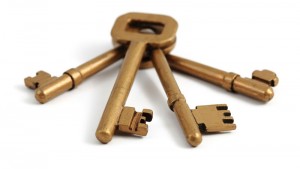 In 2013 in the United Kingdom there were 505 reported power outages. More than 2 million people were affected. Since 2010, there have been more than 30 major floods around the world, impacting more than 500 million people. There are thousands of hurricanes, tornadoes, earthquakes, flash floods and other man-made or natural disasters each and every year. Economic crashes and simple job losses can change the way you look at life literally overnight. The lesson here?
In 2013 in the United Kingdom there were 505 reported power outages. More than 2 million people were affected. Since 2010, there have been more than 30 major floods around the world, impacting more than 500 million people. There are thousands of hurricanes, tornadoes, earthquakes, flash floods and other man-made or natural disasters each and every year. Economic crashes and simple job losses can change the way you look at life literally overnight. The lesson here?
Everyone should prepare for surviving an emergency or disaster, not just radical doomsday predictors.
When you begin to think about what you need to survive a disaster scenario, you can become a little overwhelmed. There are a lot of things to consider. This leads some people to a case of analysis paralysis, and they frustratingly give up, doing nothing at all. Calm down and take a deep breath. Preparing for any type of emergency survival situation does not have to be a headache. Simply take the 4 following steps and you will be prepared to ride out any short or long-term emergency that drastically changes your way of life.
1 – You Need To Have a Plan
Head over to Disaster Survival Plan. There are free pre-made disaster survival plans for individuals, families, children and adults. There are also customizable plan outlines available there. You can also search the web for the phrase “household emergency plan” for plenty of other templates, ideas and inspiration. This step shows you exactly how to outline your overall survival plan. Our site also has a good emergency survival checklist that provides helpful information.
2 – Agree on Where to Meet Post-Emergency
Disarray and disorder are the rule of the day during most catastrophes and disasters. That’s why planning is so important. Choose a safe location in your immediate area where all of your family members will meet when disaster strikes. You also want to outline a gathering area in your home as well. A 3rd alternate meet-up location should be included, and located out of your immediate area. If only your home and local meeting spot are impossible to use because they have been affected by a catastrophe or disaster, your 3rd alternative will be.
3 – Make Communication Considerations
This doesn’t mean just charging up your cell phone every night before you go to bed. Battery-powered, hand-held radios, a land-line telephone and other alternatives to a mobile phone are smart parts of a disaster communications plan. Your plan should include collecting contact information, emails, phone numbers and physical addresses of family, friends and government disaster recovery sources.
4 – Personal Emergency Kits Are Crucial
The most common first purchase for many people planning for disaster survival is often a survival kit. They frequently include 3 days of water, food and survival supplies, packed conveniently in a backpack. You should purchase (or make your own) 1 personal emergency kit for each member of your family. Long-term supplies of water and food need to make up your home survival kit. Search for “disaster survival kit” in your favorite search engine for tips on what to include, or to purchase ready-made survival kits online. Two suppliers of these kinds of supplies that we have already approved include BuyEmergencyFoods Survival Kits and Wise Food Storage Survival Kits. We will be posting detailed reviews for their kits and other high quality survival kits soon.
Comments are closed